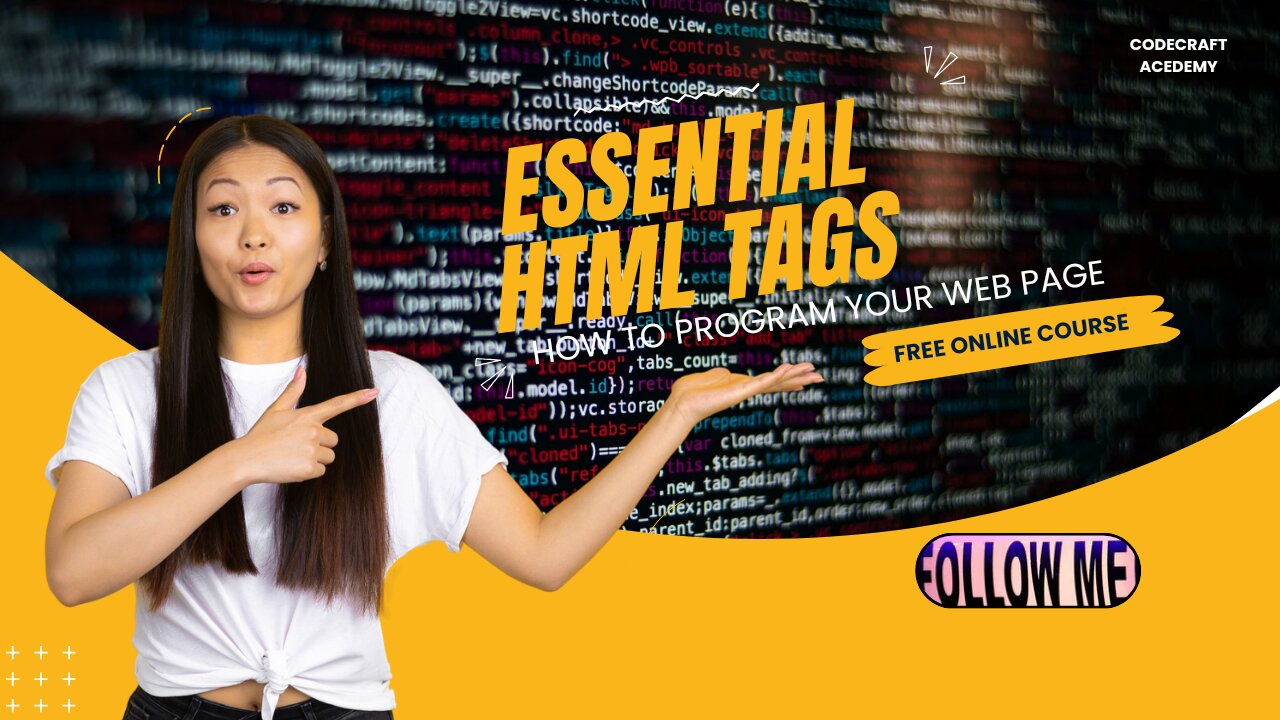Premium Only Content

"The Complete Guide to Essential HTML Tags for Beginners"|"Mastering HTML: A Guide to Essential Tag"
HTML, or HyperText Markup Language, is the fundamental building block of the World Wide Web. It provides the structure and formatting for web pages, allowing content to be displayed in a visually appealing and organized manner. Within HTML, there are a variety of essential tags that play a crucial role in defining the structure and layout of a webpage.
One of the most important HTML tags is the <html> tag, which serves as the root element of an HTML document. This tag encloses all other elements on the page and defines the overall structure of the document. Within the <html> tag, there are several other essential tags that are commonly used, such as the <head> tag, which contains meta-information about the document, and the <body> tag, which contains the main content of the page.
Another essential HTML tag is the <title> tag, which specifies the title of the webpage that appears in the browser tab. This tag is important for both search engine optimization and user experience, as it helps users identify the content of the page and improves accessibility.
The <h1> to <h6> tags are essential for defining headings and subheadings on a webpage. These tags are used to organize and structure content, making it easier for users to navigate and understand the information presented on the page.
The <p> tag is another essential HTML tag that is used to define paragraphs of text on a webpage. This tag is crucial for organizing and formatting textual content, making it more readable and visually appealing.
In addition to text-based content, images are an important element of web design. The <img> tag is used to insert images into a webpage, allowing designers to enhance the visual appeal of their content and engage users with multimedia elements.
Links are also a critical component of web design, allowing users to navigate between different pages and websites. The <a> tag is used to create hyperlinks, enabling users to click on text or images and be redirected to another page or website.
Forms are another essential feature of web design, allowing users to input data and interact with web pages. The <form> tag is used to create interactive forms, while input elements such as <input>, <textarea>, and <button> allow users to enter text, select options, and submit data.
Overall, understanding and utilizing these essential HTML tags is crucial for creating well-structured and visually appealing web pages. By mastering these tags, web designers can effectively communicate information, engage users, and enhance the user experience on their websites.
-
 11:07
11:07
Politibrawl
12 days agoRepublican rising star DESTROYS theatrical Democrat in front of the entire world
42.1K20 -
 LIVE
LIVE
StoneMountain64
2 hours agoOnly game with BETTER desctruction than Battlefield?
275 watching -
 LIVE
LIVE
Viss
3 hours ago🔴LIVE - Viss & Dr Disrespect Take on The 5 Win Minimum PUBG Challenge!
117 watching -
 LIVE
LIVE
sophiesnazz
12 minutes agoLETS TALK ABOUT BO7 !socials !specs
108 watching -
 DVR
DVR
The Quartering
2 hours agoToday's Breaking News!
20.3K11 -
 LIVE
LIVE
GritsGG
6 hours agoWin Streaking! Most Wins 3390+ 🧠
99 watching -
 2:20:00
2:20:00
Tucker Carlson
3 hours agoDave Collum: Financial Crisis, Diddy, Energy Weapons, QAnon, and the Deep State’s Digital Evolution
69.7K52 -
 1:06:56
1:06:56
Sean Unpaved
18 hours agoSwitch-Hitting Stories: Chipper on Baseball, Football, & the Game's Future
9.28K1 -
 1:23:11
1:23:11
Timcast
4 hours agoTrump SLAMS Anti-American Museums, BANS Migrants For WOKE Views
112K80 -
 5:46
5:46
Buddy Brown
1 day ago $2.24 earnedOklahoma Just Made the BOLDEST MOVE of our Time! | Buddy Brown
19.6K12